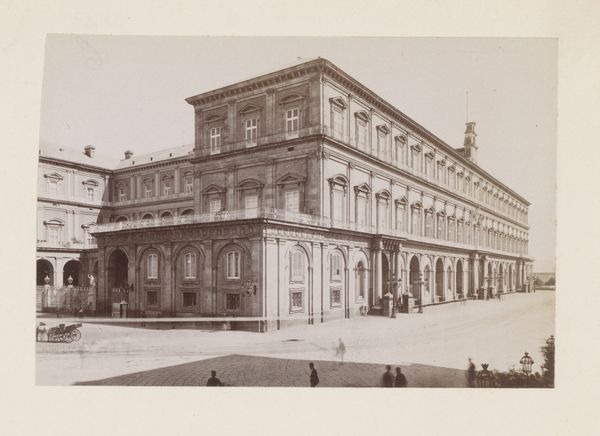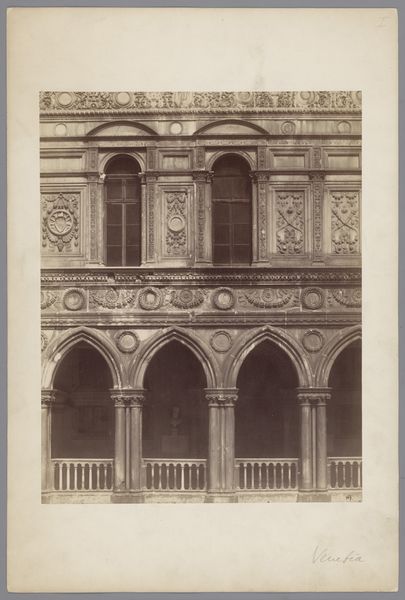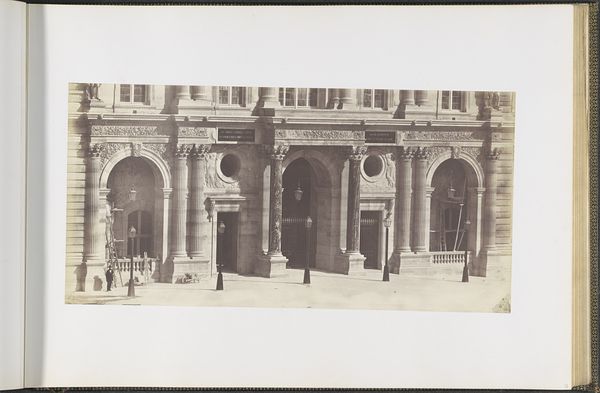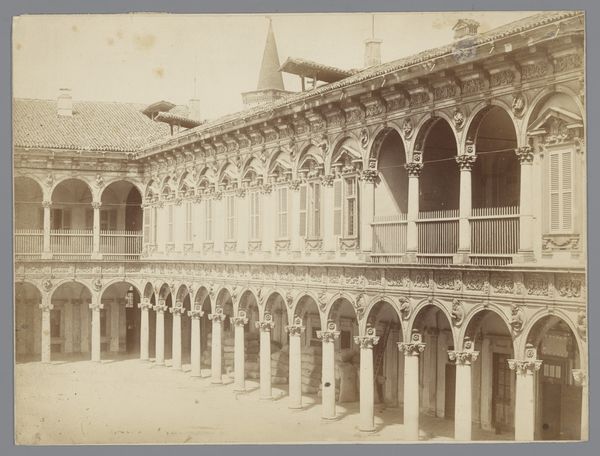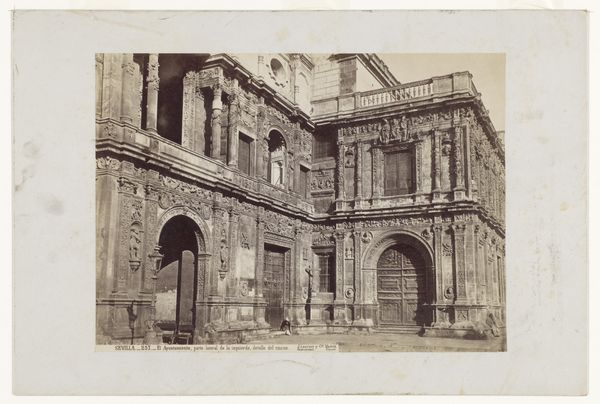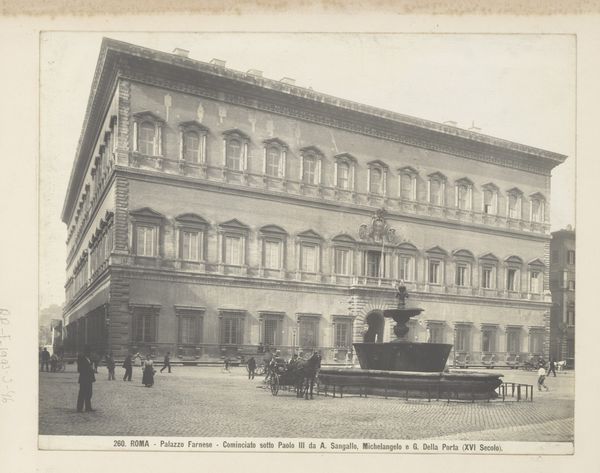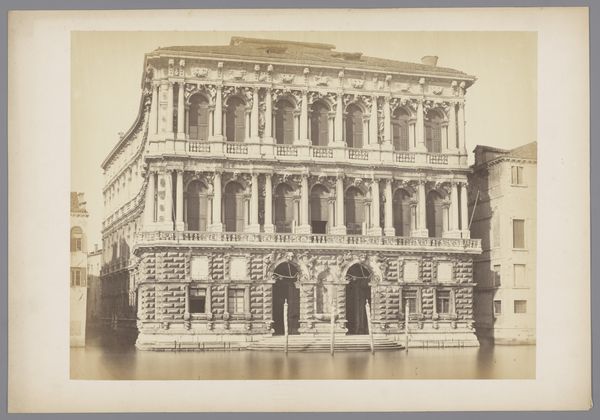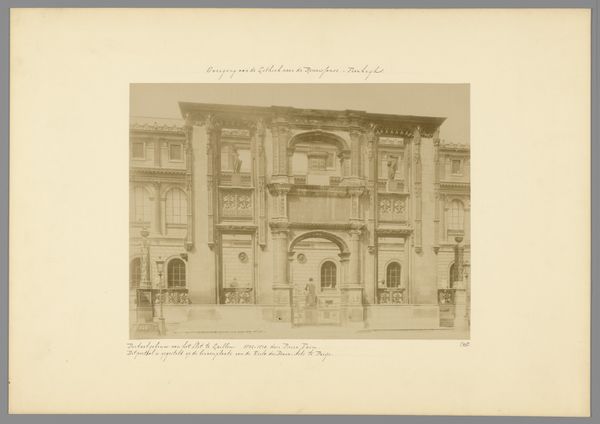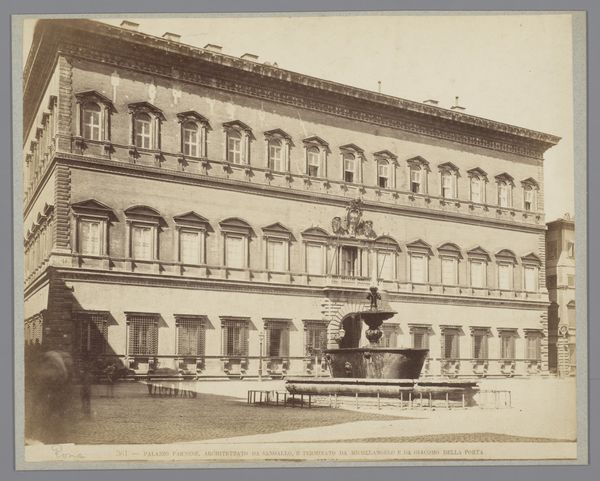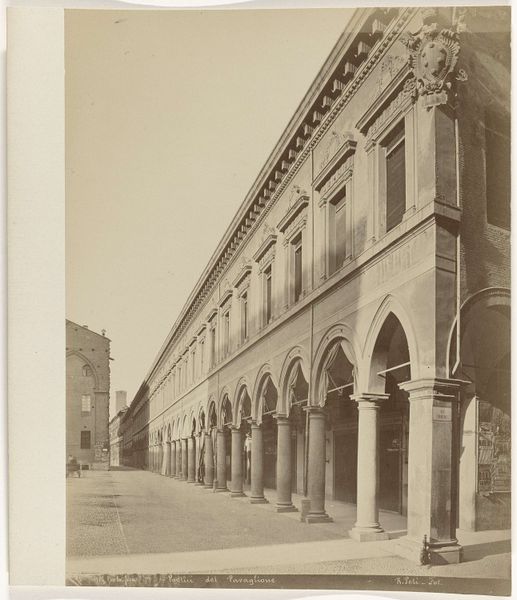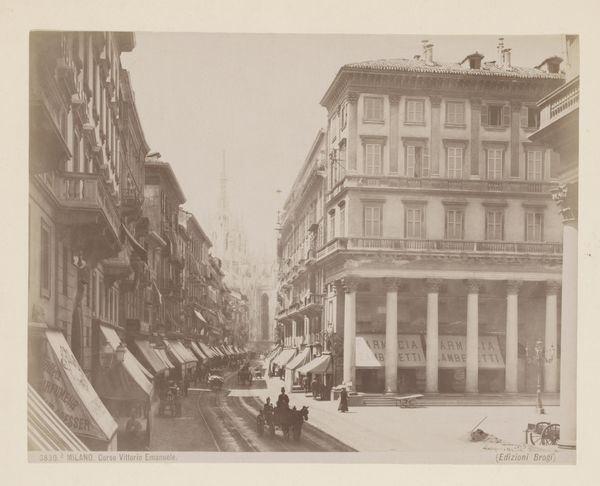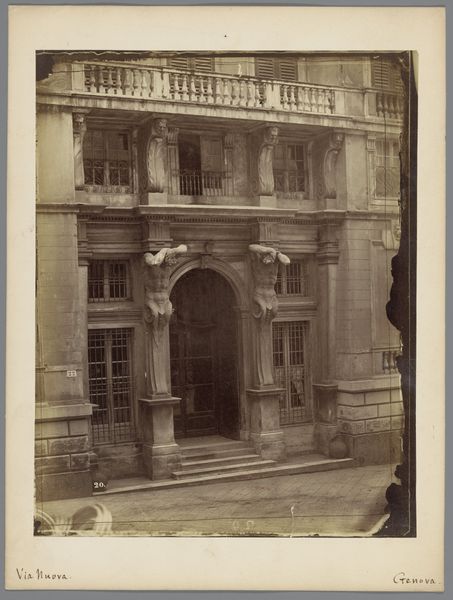
print, photography, architecture
# print
#
sculpture
#
landscape
#
historic architecture
#
traditional architecture
#
photography
#
ancient-mediterranean
#
cityscape
#
architecture
#
realism
#
statue
Dimensions: height 204 mm, width 263 mm
Copyright: Rijks Museum: Open Domain
Curator: Immediately I'm struck by the light. The clarity and depth Anderson achieves! Editor: We're looking at "Portico van het Palazzo Farnese, Rome," a photograph by James Anderson, dating from around 1870 to 1880. It captures an interior courtyard. What grabs you about the light, exactly? Curator: It's how it reveals the architecture. The shadows create a drama. Look at how the light kisses the cornices. It's almost dreamlike. I keep wondering what it must have felt like to stand in this space! Editor: As a historian, I find this image significant as a record of the architectural ambition of the Roman elite. The Palazzo Farnese was, for a time, one of the most impressive palaces in Rome, reflecting the power of the Farnese family. Anderson's photo helps us see how these structures were presented to the public—as symbols of wealth, power, and cultural influence. Curator: Symbols, sure, but even separated from the history, it is quite captivating. Notice how Anderson uses perspective. We’re trapped inside the gaze. There is this subtle hum of melancholy about it—do you sense it? Editor: It has certainly gained such qualities through the passage of time, its presentation within museum culture, and so on. The museum setting encourages contemplative appreciation, and our interpretation can also easily shift with new historical research. It might encourage melancholy in the future, but pride in the present! Curator: True! Still, imagine stumbling upon this as an artist. The composition, the tones, everything—it is ready to pour into your mind and reshape your own aesthetic landscape. Editor: A powerful statement on how a seemingly straightforward photograph, taken over a century ago, can serve both as a historical document and a deeply personal experience. Curator: Absolutely. And a reminder that every artwork is part of this constant, lovely dialogue through time, reshaping what was, what is, and what will be.
Comments
No comments
Be the first to comment and join the conversation on the ultimate creative platform.

